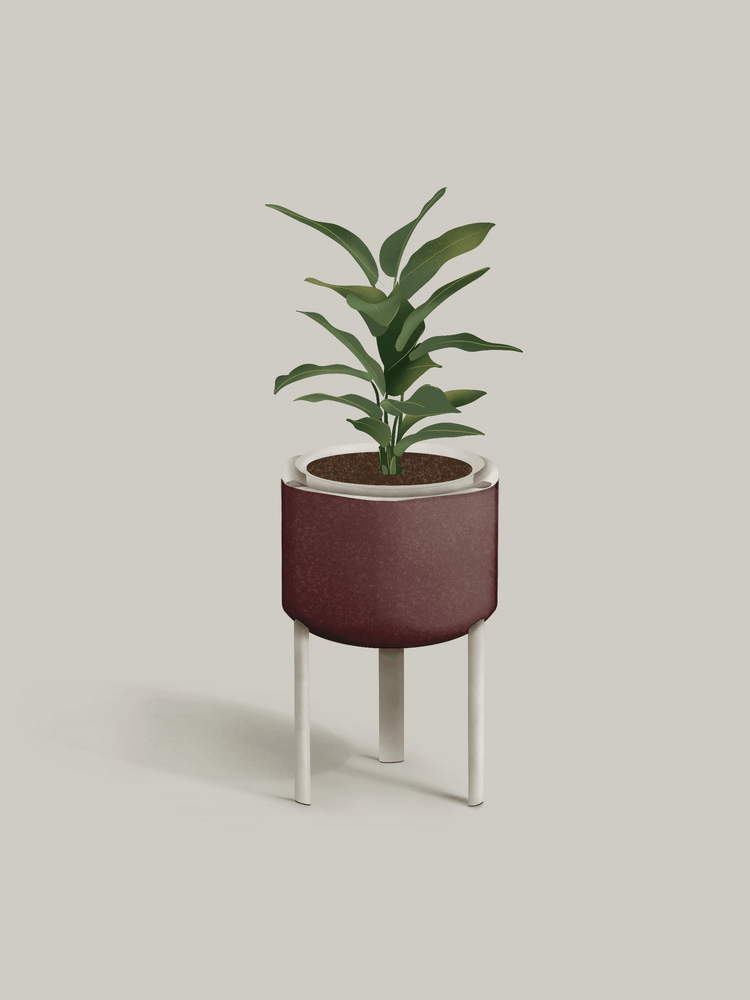At Marly, we’re confident that we’ve created the world’s most beautiful self-watering planter for the home, garden and office.
But, what exactly is a self-watering planter? How does a self-watering planter work? Is a self-watering planter actually good for your plants? And, are they worth the investment?
Below, we take a deep-dive into the world of self-watering planter systems and answer the most important questions about these ingenious gardening tools.
Table of contents:
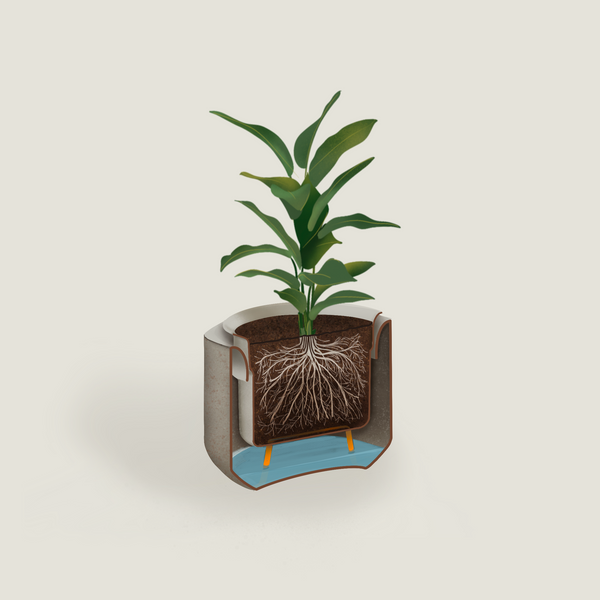
What is a self-watering planter?
A self-watering planter is essentially a container with a built-in reservoir that stores water and delivers it to the plant's roots as and when needed, reducing the frequency of manual watering.
Self-watering planters are a clever gardening tool designed to make plant care easier and more convenient.
Here's how a self-watering planter typically works:
Reservoir: The planter features a reservoir, usually located at the bottom or side of the container. This reservoir holds water, ensuring a steady supply for the plant.
Wicking System: A wicking mechanism, often in the form of a wick or absorbent material, extends from the reservoir up into the soil of the planter. This allows water to travel upwards through capillary action, reaching the plant's roots.
Once the water has been absorbed and is able to reach the plant's leaves, the water can then be used for photosynthesis and other essential plant processes.
Water Level Indicator: Some self-watering planters, like Marly, include a water level indicator, allowing gardeners to easily monitor the water level in the reservoir and refill it when necessary.
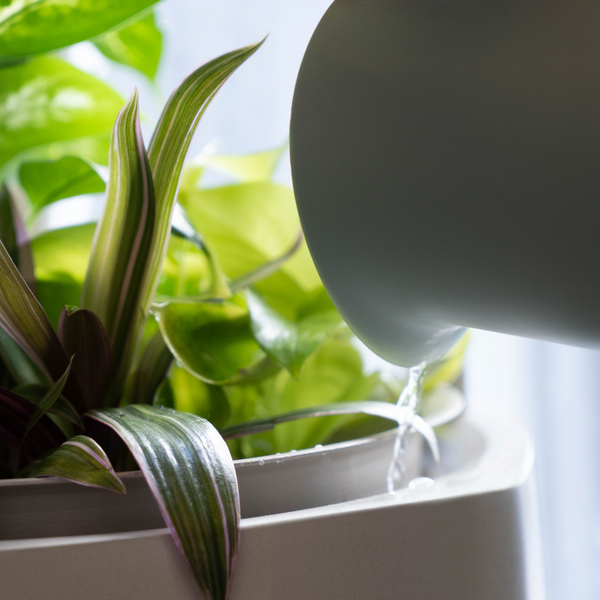
What are the benefits of a planter that waters itself?
A planter that waters itself, often referred to as a self-watering planter, offers numerous benefits that can simplify plant care and promote healthier, more vibrant growth.
Consistent Moisture Levels: Self-watering planters ensure a steady supply of moisture to the plant's roots. This consistency helps prevent under-watering or over-watering, which are common problems in traditional pots. Plants receive just the right amount of water they need for healthy growth and development.
Reduced Maintenance: With a self-watering system in place, you won't need to water your plants as frequently. This is especially beneficial for busy gardeners, frequent travelers, or those who may forget to water their plants regularly (we’ve all been there!). It reduces the time and effort required for plant care, making gardening more convenient for you.
Prevents Water Runoff: Traditional watering methods can result in water runoff, leading to nutrient loss and potential damage to surfaces inside and outside your home. Self-watering planters deliver water directly to the roots, minimizing runoff and ensuring efficient water usage.
So, no need to apologize to your landlord for stained shelves or damp floorboards at the end of your lease!
Great for Busy Gardeners: If you travel frequently or are away from home for extended periods, self-watering planters provide peace of mind knowing your plants will receive adequate hydration in your absence.
Enjoy your holiday without ever needing to ask neighbors to water your plants again!
Healthy Plants: By maintaining consistent moisture levels and preventing water stress, self-watering planters promote healthier plant growth. Plants are less susceptible to wilting, yellowing leaves, and other signs of dehydration or overwatering, resulting in lusher foliage and more abundant blooms.
Meaning you become the envy of your plant loving friends without breaking a sweat.
Versatility: Self-watering planters can be used for a wide variety of plants, including vegetables, herbs, flowers, and houseplants. Whether you're growing a small indoor herb garden or cultivating a lush outdoor oasis, self-watering planters offer flexibility and adaptability to suit your gardening needs.
Marly products take this one step further by offering options to stack and customize your planters, allowing you to quite literally build a garden in any space.
Environmental Benefits: At Marly we are all about sustainability, and keeping things green is part of our ethos. Because self-watering planters deliver water directly to the roots, they minimize water waste compared to traditional watering methods.
Plus, happier plants make for a happier planet!
In summary, self-watering planters offer a convenient and efficient way to maintain healthy plants with minimal effort. Whether you're a novice gardener looking to simplify plant care or an experienced enthusiast seeking to optimize growing conditions, self-watering planters provide a range of benefits that contribute to successful gardening experiences.
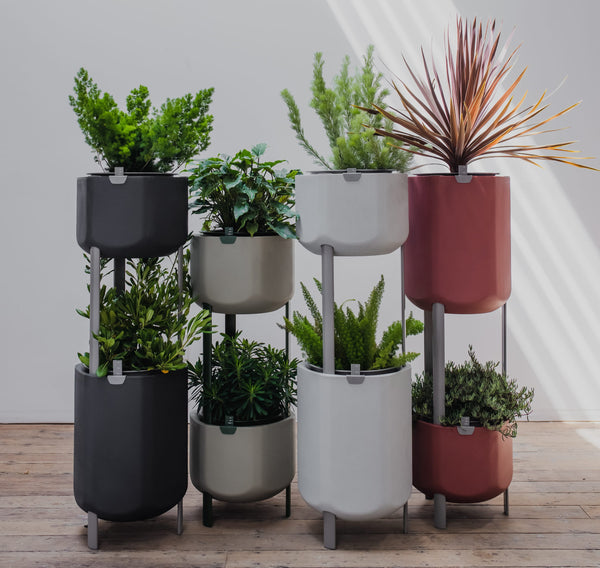
How to use a self-watering planter?
The Marly community is made up of both seasoned and amateur gardeners. We’ve strived to create a product that is simple to use whatever your level of knowledge.
Using a self-watering planter is a straightforward and efficient way to ensure your plants receive the right amount of water without the hassle of daily watering.
Every Marly planter purchase includes an instructional booklet and access to a support team to help you with a successful set-up and ensure positive growth for your plants.
Here's a step-by-step guide on how to use a self-watering planter effectively:
-
Choose the Right Location: Select a suitable location for your self-watering planter. Consider factors such as sunlight requirements and space availability to ensure the best growing conditions for your plants.
And remember, Marly planters stack! This means even the smallest of spaces can become green havens.
-
Add Your Soil, Plant and/or Seeds: Make sure healthy soil is evenly distributed and level within your planter.
Marly’s aluminum planters contain holes perfectly placed to insert your wicking (included), ready to absorb and distribute water through your soil.
-
Fill the Reservoir: Simply fill the reservoir of the planter with water. Marly planters have a 360 degree access point for easy filling. Our handy water level indicator will tell you exactly the right amount to pour.
-
Monitor Water Levels: Keep an eye on the water level in your reservoir. Depending on environmental conditions and plant type, your planter may need to be topped up more or less frequently.
The Marly water level indicator makes this process easier and ensures you know exactly when to refill. It's essential to maintain adequate moisture levels to support healthy plant growth.
-
Enjoy Your Garden: Sit back, relax, and enjoy the beauty of your self-watering planter garden! With less effort required for watering, you can focus on enjoying the fruits of your gardening labor without the stress of constant maintenance.
By following these simple steps, you can make the most of your self-watering planter and create a thriving garden that flourishes with lush, healthy plants.
Whether you're an experienced gardener or new to the hobby, self-watering planters offer a convenient and efficient solution for growing plants with ease.
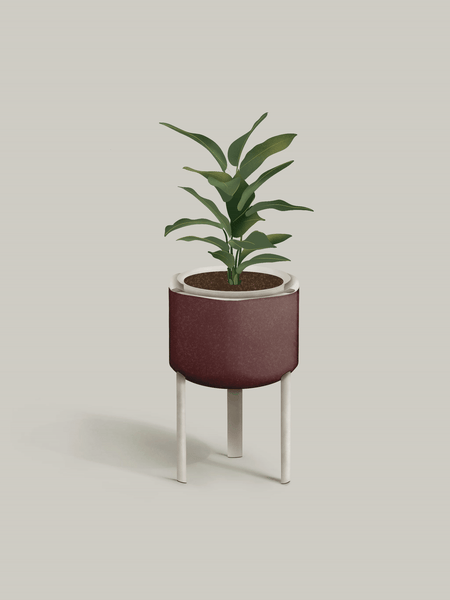
Do self-watering planters work?
Absolutely! Self-watering planters are highly effective tools for maintaining healthy plants.
Self-watering planters work by providing consistent moisture to plant roots through a reservoir and wicking system. This eliminates the need for frequent watering, making them ideal for busy individuals, those new to gardening and the forgetful amongst us.
By preventing overwatering, self-watering planters promote healthier plant growth and reduce the risk of root rot.
They are versatile and can be used indoors or outdoors, making them suitable for various environments.
Additionally, self-watering planters are easy to use and require minimal maintenance once set up. Their forgiving nature makes them ideal for beginners learning to care for plants, or those with less time on their hands.
Overall, self-watering planters offer convenience, efficiency, and success, making them a valuable addition to any gardener's toolkit.
Explore Marly Garden products to see how you can take your home or office garden to the next level.
How do self-watering planters not overwater?
Self-watering planters effectively avoid overwatering through a clever design that regulates moisture levels in the soil. Here’s how they do it:
Reservoir System: Self-watering planters feature a reservoir at the bottom or side of the container. This reservoir holds excess water that isn't immediately absorbed by the soil.
Wicking Mechanism: A wicking mechanism, often a wick or absorbent material, extends from the reservoir up into the soil of the planter. This wick draws water from the reservoir and delivers it to the roots of the plants as needed.
Capillary Action: Through capillary action, water moves upward from the reservoir to the soil, providing moisture to the plant roots. This natural process ensures that the soil remains consistently moist but not waterlogged.
Water Level Regulation: Self-watering planters typically have a mechanism to regulate the water level in the reservoir. This can include overflow holes or indicators that signal when the reservoir needs refilling. By maintaining the correct water level, the planter ensures that plants receive just the right amount of water, preventing overwatering.
Marly planters include a stylish water level designed exactly for this purpose.
Roots' Access to Water: The wicking mechanism only draws up water when the soil begins to dry out, allowing plants to absorb moisture as needed. This prevents water from sitting stagnant in the soil, reducing the risk of root rot and other issues associated with overwatering.
Bye bye bad smelling water and surface stains.
Overall, self-watering planters provide a controlled and efficient watering system that delivers moisture directly to the roots of plants without the risk of overwatering.
This makes them an excellent choice for maintaining healthy plants with far less effort and ensures excellent results for a wide variety of plant species.
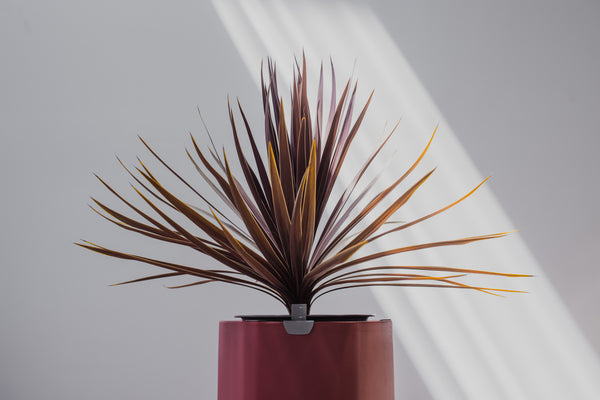
Are self-watering planters good for plants?
Self-watering planters are not just good for plants – they're fantastic for them!
These innovative gardening tools offer numerous benefits that contribute to healthier, happier plants.
Here's why self-watering planters are a game-changer for plant care:
Consistent Moisture Levels: Self-watering planters provide a consistent water supply to plant roots, ensuring they receive the moisture they need for optimal growth. This consistency helps prevent under-watering or over-watering, which can stress plants and hinder their development.
Reduced Risk of Overwatering: Overwatering is a common problem that can lead to root rot and other issues. Self-watering planters help prevent overwatering by delivering water directly to the roots as needed, rather than allowing excess water to accumulate in the soil.
Efficient Water Usage: Self-watering planters are designed to minimize water waste by delivering water directly to the roots, where it's needed most. This efficient watering system helps conserve water and promotes sustainability in gardening practices.
Ease of Maintenance: An issue that we regularly hear about from gardening communities is finding the time to adequately care for their plants. Unfortunately, this can lead to poor plant health overall.
Self-watering planters require less frequent watering and maintenance compared to traditional pots, making them ideal for busy individuals or those with limited time for gardening. Once set up, self-watering planters can often sustain plants for extended periods with minimal intervention. Simple!
Healthy Plant Growth: Plants grown in self-watering planters tend to have stronger roots, lusher foliage, and more abundant blooms, resulting in a more vibrant and thriving garden.
Versatility: Self-watering planters can be used for a wide variety of plants, including herbs, vegetables, flowers, and houseplants. Whether you're growing a small indoor garden or cultivating an outdoor fruit patch, self-watering planters are versatile enough to suit your gardening needs.
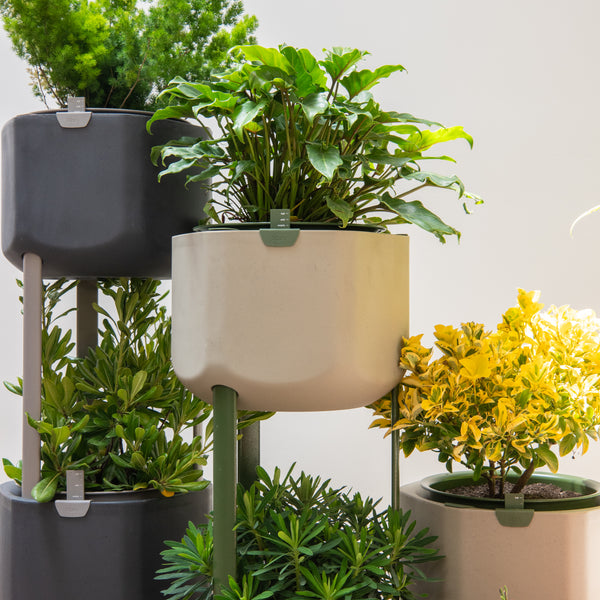
Are self-watering planters worth it?
Definitely! Self-watering planters are undoubtedly worth the investment for anyone looking to simplify plant care and achieve beautiful, thriving gardens, indoors and out, with very little effort.
With their convenience, water efficiency, and ability to promote healthy plant growth, self-watering planters offer a practical and sustainable solution for gardening enthusiasts of all levels.
Whether you're short on time, space, or gardening experience, self-watering planters provide an easy and effective way to enjoy the beauty of nature right at home, and all the benefits that come with cultivating a green space of your own.
So, there you have it!
Our complete roundup on the simple, but very effective, self-watering planter.
And in our humble opinion, the Marly self-watering planter is one of the best on the market.
We’ve made a conscious effort to create a product that is beautiful to look at, versatile, easy to use, and a huge benefit to you and your plants.
You can shop the whole Marly collection here.
And, learn more about our company here.

